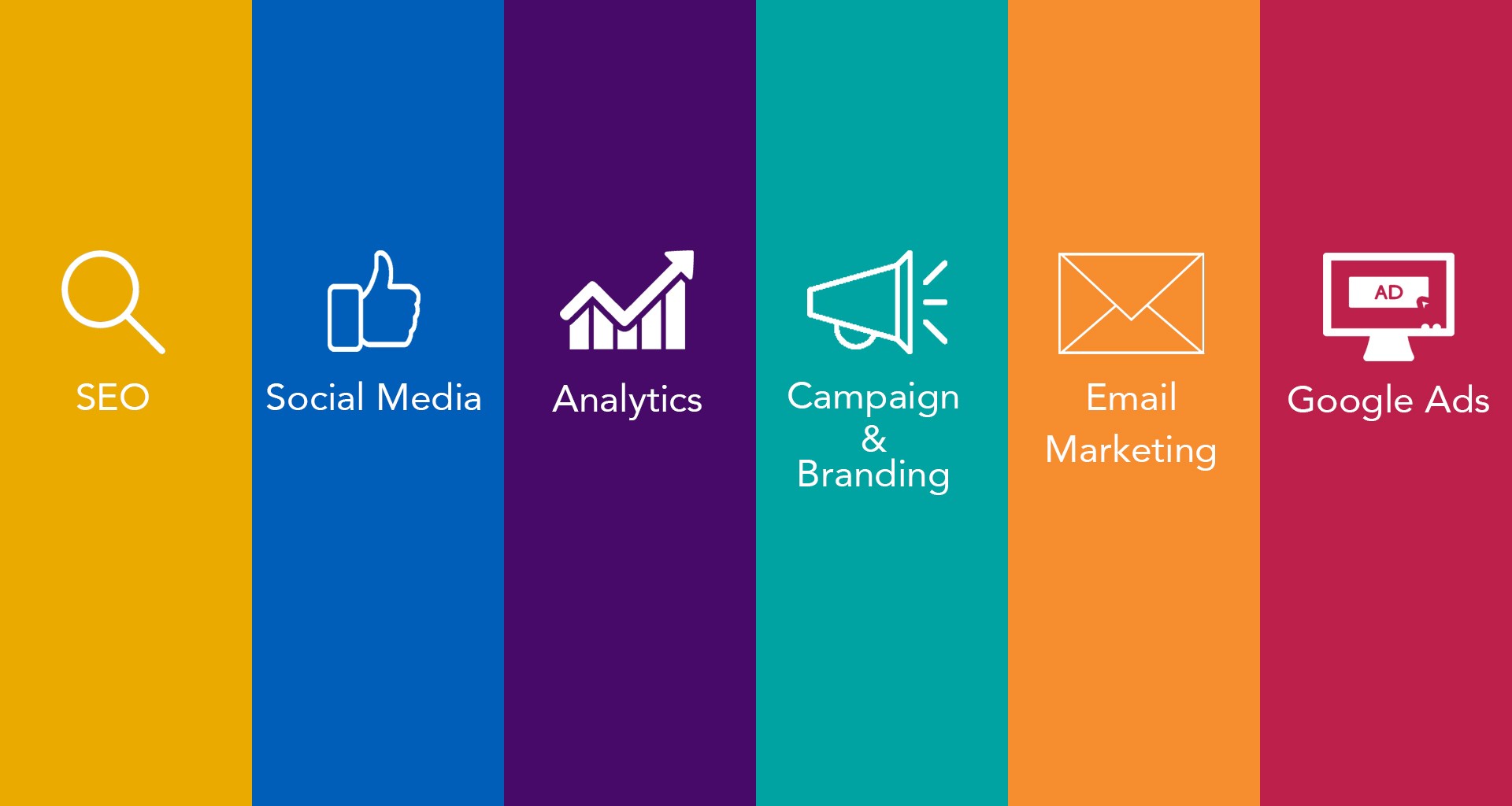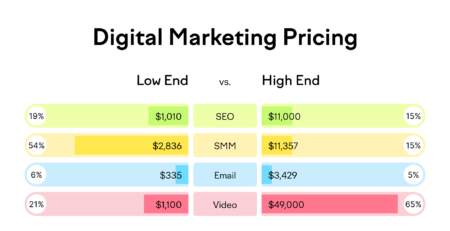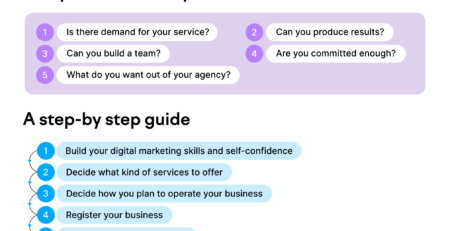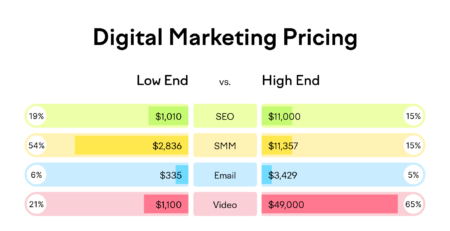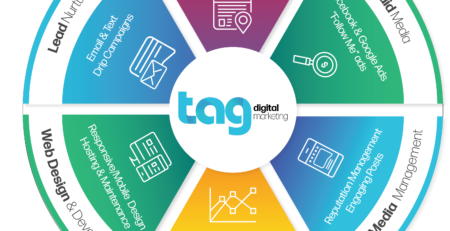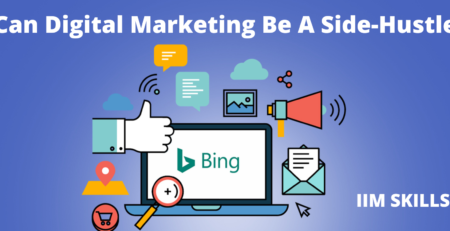What Are The Main Pillars Of Digital Marketing?
Are you curious about the foundations of digital marketing and how it can help businesses thrive in the online world? Well, you’ve come to the right place! In this article, we’ll dive into the exciting world of digital marketing and explore its main pillars. Get ready to uncover the secrets behind successful online marketing campaigns and discover how businesses leverage these pillars to reach their target audience effectively.
First things first, let’s answer the burning question: What are the main pillars of digital marketing? Think of digital marketing as a sturdy structure supported by four essential pillars. These pillars include search engine optimization (SEO), social media marketing, content marketing, and email marketing. Each pillar plays a crucial role in connecting businesses with their customers and driving growth in the digital age.
Now, you might be wondering, “Why are these pillars so important?” Well, my young friend, they work together harmoniously to create a solid online presence, boost brand awareness, engage with customers, and generate leads. By understanding and implementing these pillars, businesses can unlock the full potential of digital marketing and make their mark in the competitive online landscape.
So, get ready to embark on a digital adventure as we dive deeper into each pillar, unraveling the strategies and techniques that make them the backbone of modern marketing. Whether you dream of becoming a digital marketer yourself or simply want to understand how businesses navigate the digital realm, this article will help you gain a solid understanding of the main pillars of digital marketing. Let’s get started!
Understanding the Main Pillars of Digital Marketing: A Comprehensive Guide
Digital marketing has become an integral part of every business’s marketing strategy. With the ever-increasing reliance on the internet and digital platforms, it is crucial for businesses to understand and utilize the main pillars of digital marketing effectively. In this comprehensive guide, we will explore the key pillars of digital marketing and how each one contributes to the success of a business’s online presence.
The Importance of Search Engine Optimization (SEO)
In the vast sea of the internet, search engine optimization (SEO) serves as the compass that directs users towards your website. SEO encompasses a variety of techniques aimed at improving your website’s visibility and ranking on search engine result pages. It involves keyword research, on-page optimization, link building, and user experience optimization.
One of the primary benefits of implementing solid SEO practices is achieving organic traffic. By optimizing your website for relevant keywords and providing valuable content, you increase your chances of appearing at the top of search engine results. This can significantly boost your website’s visibility and drive targeted traffic to your site, resulting in higher conversion rates and increased revenue.
It is important to note that SEO is an ever-evolving field, as search engine algorithms continue to change. Staying up to date with the latest trends and strategies in SEO is crucial to maintaining a strong online presence.
Unlocking the Power of Social Media Marketing
Social media platforms have revolutionized the way businesses connect with their audience. Social media marketing involves creating and sharing engaging content on platforms such as Facebook, Instagram, Twitter, and LinkedIn, to name a few. It allows businesses to reach a vast audience and build brand awareness in a more interactive and personalized way.
The benefits of social media marketing are vast. It provides a platform for businesses to establish a direct line of communication with their customers, allowing for instant feedback and engagement. It also enables businesses to create targeted ad campaigns, reaching specific demographics based on users’ interests, behaviors, and demographics.
Furthermore, social media marketing allows for the cultivation of brand ambassadors and influencers who can help promote your products or services. By building a strong online community and encouraging user-generated content, businesses can tap into the power of social media advocacy.
The Role of Content Marketing in Building Trust and Authority
Content marketing is the backbone of any successful digital marketing strategy. It involves creating and distributing valuable, informative, and engaging content to attract and retain a clearly defined audience. Content can come in various forms, including blog posts, videos, infographics, and podcasts, among others.
One of the key benefits of content marketing is its ability to establish trust and authority. By providing valuable information to your audience, you position your business as an industry leader and a trusted source of knowledge. This, in turn, enhances your credibility and helps build lasting relationships with your customers.
In addition to establishing trust, content marketing also plays a crucial role in driving organic traffic and generating leads. Creating high-quality content optimized with relevant keywords can improve your website’s visibility and attract users who are actively seeking information related to your industry.
Email Marketing: Reaching Your Audience Directly
In the digital age, email marketing remains one of the most effective ways to reach your audience directly. This marketing approach involves sending targeted emails to individuals who have expressed interest in your products or services. Email marketing aims to nurture leads, drive engagement, and ultimately convert subscribers into customers.
One of the key advantages of email marketing is its ability to deliver personalized and tailored messages to your audience. By segmenting your email list based on factors such as demographics, purchase history, and engagement levels, you can create highly targeted campaigns that resonate with your subscribers.
Furthermore, email marketing allows for automation, saving businesses time and effort. Automated emails can be set up to welcome new subscribers, send abandoned cart reminders, or follow up with customers after a purchase.
The Power of Pay-Per-Click (PPC) Advertising
Pay-per-click (PPC) advertising is a form of online advertising where businesses pay a fee each time their ad is clicked. It allows businesses to display their ads prominently on search engine result pages or other websites, targeting specific keywords or demographics.
One of the main benefits of PPC advertising is its immediate impact. Unlike other digital marketing strategies that take time to produce results, PPC campaigns can drive targeted traffic to your website instantly. This makes it a valuable tool for businesses looking to increase visibility, generate leads, or promote a new product or service.
Additionally, PPC advertising offers precise targeting options, allowing businesses to reach the right audience at the right time. By leveraging data and analytics, businesses can optimize their PPC campaigns, improve their return on investment, and achieve higher conversion rates.
Understanding the Importance of Analytics and Data
In the digital marketing landscape, data is king. Analytics and data play a crucial role in understanding the effectiveness of your digital marketing efforts and making data-driven decisions. By analyzing key metrics and data points, businesses can gain insights into their audience, identify trends, and optimize their marketing strategies accordingly.
Web analytics tools such as Google Analytics provide businesses with valuable data on website traffic, user behavior, and conversion rates. This information can help businesses identify areas of improvement, track the success of marketing campaigns, and adjust their strategies to deliver better results.
Data-driven marketing allows businesses to allocate their marketing budgets more effectively, focusing on the strategies and channels that yield the highest return on investment. By continuously monitoring and analyzing data, businesses can refine their digital marketing efforts, resulting in improved efficiency and profitability.
Evolution of Digital Marketing: What Lies Ahead?
As technology continues to advance and consumer behaviors evolve, the field of digital marketing is constantly evolving. Here are three trends to watch:
The Rise of Voice Search and Smart Speaker Integration
With the increasing popularity of smart speakers and voice assistants such as Amazon Alexa and Google Assistant, voice search is becoming more prevalent. Optimizing websites and content for voice search will be crucial to ensure businesses remain relevant and visible to their audience.
Artificial Intelligence and Machine Learning
Artificial intelligence (AI) and machine learning are reshaping the digital marketing landscape. From chatbots that offer instant customer support to predictive analytics that optimize ad campaigns, AI and machine learning are revolutionizing how businesses engage with their audience and make data-driven decisions.
Video Marketing Dominance
Video marketing has experienced tremendous growth in recent years and will continue to dominate the digital marketing landscape. With platforms like YouTube, TikTok, and Instagram Reels gaining popularity, businesses need to incorporate video marketing into their strategies to effectively engage with their audience and stand out from the competition.
In conclusion, understanding the main pillars of digital marketing is essential for businesses looking to establish a strong online presence and achieve success in the digital age. Implementing solid SEO practices, leveraging the power of social media marketing, creating valuable content, utilizing email marketing and PPC advertising, and analyzing data are all crucial components of a comprehensive digital marketing strategy. By staying informed about industry trends and embracing new technologies, businesses can stay ahead of the curve and continue to thrive in the ever-evolving world of digital marketing.
Key Takeaways: What Are the Main Pillars of Digital Marketing?
- Digital marketing involves various strategies and techniques to promote products or services online.
- The main pillars of digital marketing include search engine optimization (SEO), social media marketing, content marketing, email marketing, and data analytics.
- SEO focuses on optimizing websites to rank higher on search engine result pages.
- Social media marketing involves utilizing social media platforms to engage with and reach a wider audience.
- Content marketing involves creating valuable and relevant content to attract and retain customers.
Frequently Asked Questions
Here are some commonly asked questions about the main pillars of digital marketing:
1. How does SEO contribute to digital marketing?
SEO, or search engine optimization, plays a vital role in digital marketing. It involves improving the visibility and ranking of a website in search engine results pages (SERPs). By optimizing a website’s content, code, and structure, SEO helps attract organic traffic and increase brand visibility.
Effective SEO strategies include keyword research, on-page optimization, link building, and user experience enhancements. By implementing these techniques, businesses can improve their online presence, reach their target audience, and drive more traffic to their website, resulting in higher conversions and revenue.
2. How does social media marketing support digital marketing efforts?
Social media marketing is an integral component of digital marketing. It involves utilizing social media platforms like Facebook, Instagram, Twitter, and LinkedIn to promote products, engage with the audience, and build brand awareness. Through targeted advertising, content creation, and community engagement, businesses can reach a broader audience and foster brand loyalty.
By leveraging social media platforms effectively, businesses can gather customer insights, receive feedback, and address customer concerns promptly. Social media also provides an avenue for sharing valuable content, increasing website traffic, and generating leads that can be nurtured throughout the customer journey.
3. What role does content marketing play in digital marketing?
Content marketing is a crucial pillar of digital marketing. It involves creating and distributing valuable and relevant content to attract and engage a target audience. Content can take various forms, such as blog posts, articles, videos, infographics, and podcasts, and should be tailored to address the needs and interests of the target audience.
By consistently producing high-quality content, businesses can showcase their expertise, build brand authority, and establish trust with their audience. Content marketing also supports other digital marketing strategies by improving search engine visibility, driving organic traffic, and nurturing leads throughout the customer journey.
4. How does email marketing contribute to overall digital marketing success?
Email marketing plays a critical role in digital marketing as it allows businesses to directly communicate with their audience and nurture relationships. Through targeted email campaigns, businesses can deliver personalized messages, promote products or services, share valuable content, and drive conversions.
Effective email marketing strategies involve building a quality email list, segmenting the audience based on their interests or demographics, and crafting compelling and relevant email content. By utilizing email marketing automation tools, businesses can streamline the process and deliver timely and targeted messages, ultimately increasing brand loyalty and driving revenue.
5. How does data analysis and measurement contribute to the success of digital marketing campaigns?
Data analysis and measurement are crucial for optimizing digital marketing campaigns. By tracking and analyzing key performance indicators (KPIs) such as website traffic, conversion rates, and customer engagement, businesses can gain insights into the effectiveness of their marketing efforts.
These insights help businesses make data-driven decisions, identify areas for improvement, and allocate resources more effectively. By continuously monitoring and measuring campaign performance, businesses can refine their strategies, target the right audience, and maximize their return on investment (ROI).
The Pillars of Digital Marketing

Summary
Digital marketing has different parts that work together to promote products or services online. The main pillars of digital marketing include search engine optimization (SEO), content marketing, social media marketing, and paid advertising.
SEO helps websites appear in search engine results, while content marketing creates valuable and engaging content for target audiences. Social media marketing involves using platforms like Facebook or Instagram to reach and connect with customers. Finally, paid advertising allows businesses to advertise their products or services on platforms like Google or social media.
By using these pillars effectively, businesses can increase their online presence, reach more customers, and drive sales. It’s important to understand and utilize all aspects of digital marketing to succeed in today’s online world.

